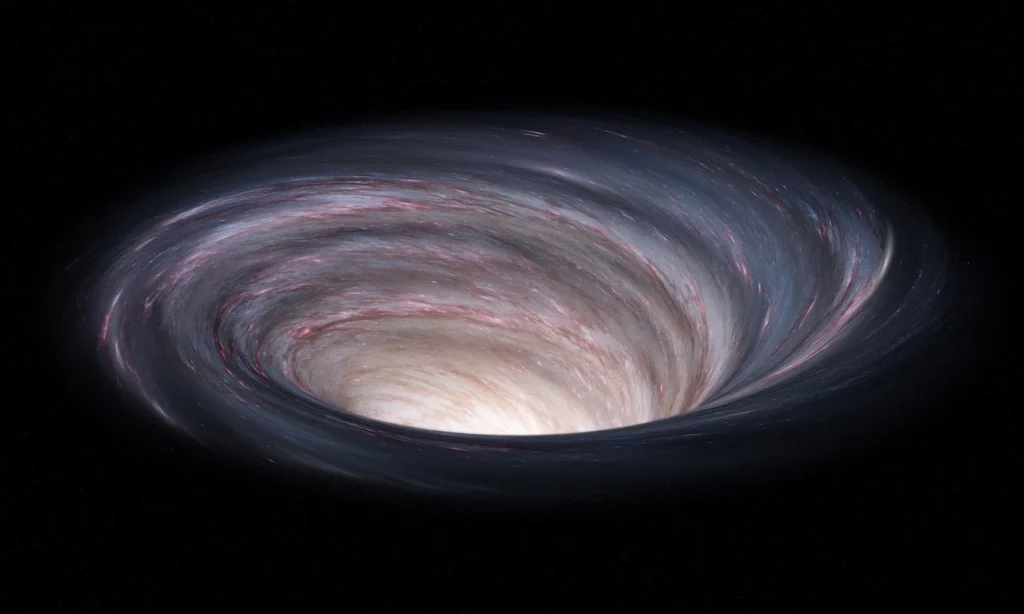White holes are theoretical space objects that are the opposites of black holes. If black holes eat everything, then white holes, on the contrary, don’t let anything enter them. White Holes wouldn’t appear white. White holes are just a name. We still have not discovered their twin “White Holes.” However, some scientists now believe that white holes may not exist.
How are White Holes Formed?
Initially, all things in the universe have a clear shape, but as time passes, they become more and more disordered. This is a law of the universe. White holes may not last for long because they would release much of their matter into space. This matter would gather around the white hole until it collapses and forms a black hole.
Event Horizon in White Holes
An event horizon is like a boundary. For a black hole, if you go beyond this line, there’s no turning back. But for a white hole, it’s like an invisible barrier that can’t be crossed. Once a white hole got a massive amount of material from somewhere, but then somehow, it stopped absorbing this material and started spitting it out, so that means that it spits out remnants of the past.
The General Theory of Relativity
In the 20th century, Albert Einstein discovered something incredible: gravity can bend space and time. It took scientists more than 40 years to understand these space objects or even prove their existence.
The photo of a black hole located in the center of the Galaxy M87. Even though many people made fun of the blurry images, giving scientists more credit for their work is essential. This photo was obtained through the international collaboration of space stations and eight ground-based telescopes. Obtaining proof of black holes, even in miniature form, required extensive effort and resources. We still have not discovered their twin “White Holes.” However, some scientists now believe that white holes may not exist.
Existence of White Holes
In 2022, three scientists got the Nobel Prize for proving that Einstein was wrong about many things and the universe is way more complicated than we thought. White holes could exist, and although they may seem bizarre and beyond our understanding, they are a possibility.
However, no evidence of white holes has been found yet, which may be due to our limited understanding of space.
Are White Holes Possible?
Scientists are questioning the possibility of white holes. We know how black holes are born, but for a white hole to appear, this whole process must be reversed, which is impossible. Physicists aim to revive the idea of white holes from being scientifically forgotten. Their argument asks, “What happens to objects entering a black hole?” According to the laws of physics, matter in the universe cannot disappear into a state of non-existence. It never disappears; it just changes.
The Difference Between Black Holes and White Holes
A black hole is a mysterious space object with a powerful, attractive force. Its gravitational pull is so intense that even light cannot escape. That’s why it seems black to us. They appear when stars at least three times bigger than our Sun ultimately burn out, turning old.
A star reduces in size and sheds gas layers over time. Its core shrinks until it turns into a small ball with immense pressure. And when it can’t withstand this pressure anymore, it collapses on itself and becomes a black hole. But a white hole visually has no difference from a black hole.
Conclusion
There is a suggestion that white holes may emerge as the offspring of a black hole. A black hole can shrink to a small size as it ages, while a white hole would be minuscule, equivalent to a particle and weighting like a hair strand. It wouldn’t have the incredible gravitational mass of its ancestor, but it would have its insides.
It is possible that our entire universe was formed from the creation of a white hole. Physicists claim that The Big Bang resembles the possible behavior of a white hole. Both of them are very similar mathematically.

